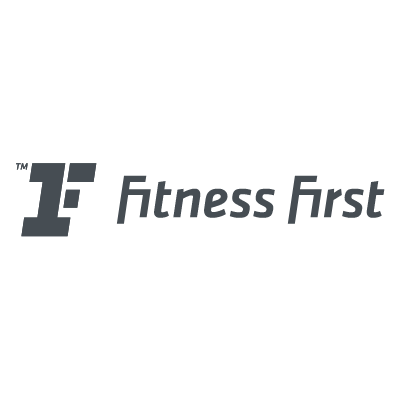How SWOT Analysis Can Make You a Better Personal Trainer

Have you done a SWOT analysis on yourself as a personal trainer or your fitness business?
It’s the quickest way to know if you’re focusing on the right things as a PT to advance your career and maximise your earning potential.
Why? Because it’s easy to double down on the things you’re good at – coaching clients in the gym – and forget the parts of the job that need urgent attention.
When was the last time you took the time to actually look at your strengths and weaknesses as a trainer? Or think about the golden opportunities and or mortal threats in your industry niche?
That’s where a SWOT analysis comes in.
You’ve completed your online personal trainer course - now it’s time to step back, assess where you’re at, and identify the opportunities that will take your career to the next level.
It’s a strategic tool that will give you clarity and direction.
By looking inward and understanding what you do well, where you need to improve, what opportunities you should jump on, and what threats you need to address, you can take control of your career trajectory.
This article will help you recognise your strengths and identify the weaknesses you need to work on.
It will show you how to stop opportunities to stoke the fire of business growth, and spot the threats that can blindside you and kill of your career.
By the end of this article, you’ll not only understand how to conduct a SWOT analysis, but you’ll also have the tools to apply its insights in practical, career-boosting ways.
Here’s everything you need to know about doing your own SWOT analysis and making it a secret weapon for business success...
What is a SWOT Analysis and why it matters for personal trainers
Every great personal trainer has one thing in common: they understand themselves and their business inside out. The ability to assess where you are now and where you need to go is crucial to building a thriving career in fitness. This process begins with a tool that’s often overlooked but incredibly powerful: a SWOT analysis.
SWOT stands for Strengths, Weaknesses, Opportunities, and Threats. It’s a strategic framework used by businesses across the globe to evaluate their current position and plan for growth. But it’s not just for big corporations like McDonald’s or Starbucks – personal trainers can (and should) use this approach to bolster their business and advance their career.
Here’s why it matters: As a personal trainer, your ‘business’ revolves around more than just fitness knowledge. It’s about communication, client management, self-promotion, and adaptability in an industry that is continually evolving. A SWOT analysis gives you a structured way to evaluate your capabilities and pinpoint areas for improvement. It can help you:
- Improve your training methods by identifying where you excel and where you need more development.
- Build better client relationships by understanding what clients value most about you.
- Grow your business by recognising untapped opportunities and mitigating any potential risks.
A SWOT analysis isn’t just a one-off exercise. Done regularly, it can become your roadmap for continual improvement, whether you’re just starting out or you’re already established. It’s about stepping back, reflecting, and planning with purpose.
Strengths: Leveraging your unique skills as a trainer
Identifying your strengths as a personal trainer
To really take advantage of the opportunities ahead of you, you need to start by knowing what makes you stand out. This begins with reflecting on your personal skills, qualifications, and experience.
Ask yourself: What do you do better than anyone else? What unique value do you bring to your clients? Maybe it's your in-depth knowledge of nutrition, your ability to connect with clients on a personal level, or your expertise in a specific area of fitness, like strength training or injury rehabilitation.
Strengths aren’t limited to technical knowledge either. Strong interpersonal skills, empathy, and an ability to motivate are often what separates the average trainer from the exceptional. Don’t overlook the importance of experience too – whether it’s from your own fitness journey, prior roles in customer service, or working in a team environment.
Here are a few examples of strengths personal trainers might identify:
- Specialist knowledge: Are you qualified in a niche area like pre- and post-natal fitness or strength and conditioning for track and field athletes?
- Strong communication skills: Do you naturally inspire and motivate clients, making them feel understood and supported?
- Track record of results: Have you consistently helped clients achieve significant weight loss or health transformations?
Being able to articulate your strengths isn’t just for self-awareness – it’s a foundation for growth. Once you understand where you really stand out, you can begin to build your brand around it.
Using strengths to attract clients and build loyalty
Knowing your strengths is only half the battle. The next step is to use these strengths to stand out in a crowded market and attract clients who will benefit most from your expertise. You need to let the world know why you’re the trainer they need.
Start with your marketing. Your strengths should be front and centre in everything you do – from your website to your social media presence. If you’re particularly skilled in a niche, make that your calling card. For example, if you excel in functional training for older adults, tailor your messaging to speak directly to that demographic. Equally, if you’re the trainer that clients come to for help losing weight, you need to speak to that audience and their pain points.
Use testimonials and case studies as social proof. Client success stories that align with your strengths will demonstrate to potential clients that you can deliver the results they want. It’s far more powerful to show, rather than tell, how effective your methods are.
When it comes to consultations with prospective clients, your strengths should form the backbone of your value proposition. Be clear about what makes you different from other trainers. Speak confidently about your expertise, but keep it relevant to their needs. If you're an expert in corrective exercise, for instance, frame that strength in terms of how it will benefit the client's performance, reduce their risk of injury, or enhance their recovery time.
Finally, in the age of digital fitness, don’t underestimate the power of social media to communicate your strengths. Whether through educational content, client testimonials, or showcasing your knowledge in action, platforms like Instagram, TikTok, and YouTube can amplify your message and build credibility.
Your strengths are the reason clients will choose you over someone else. Understand them, market them, and you’ll find not only more clients, but clients who are a perfect fit for your training style. That’s how you build loyalty – and a sustainable business.
Weaknesses: Turning shortcomings into growth opportunities
Identifying weaknesses honestly
Self-awareness is not just a buzzword; it's a crucial element in developing a long-term career in personal training. You may be confident in your abilities, but understanding where you fall short is just as important – perhaps even more so – than knowing your strengths. Ignoring your weaknesses won’t make them disappear, and worse, they could be holding you back from achieving real success. As a coach or trainer you might have told your clients to “attack their weaknesses and make them strengths”, and you should do the same for your career.
So, where do you start? Be brutally honest with yourself – this is where growth begins. Maybe you've noticed that when it comes to training older adults or clients with specific health conditions, you're not as confident as you’d like to be. Do you hesitate when a potential client with a knee injury or arthritis approaches you? Perhaps you stick to younger, fitter clients because that's your comfort zone, but this leaves you out of a rapidly growing market that could dramatically expand your business.
Or maybe you’re exceptional when it comes to creating high-energy workouts, but the business side of things? Your eyes glaze over when it’s time to balance your books, track expenses, or plan your taxes. You might be losing money by underpricing your services or missing opportunities to optimise your earnings.
Then there’s the challenge of selling yourself. You’re brilliant when you’re training someone one-on-one, but how do you convince them to sign up in the first place? Are you getting tongue-tied during consultations, struggling to close the deal, or relying on “hoping they’ll call back” rather than confidently sealing the agreement? Maybe your issue is client retention – you train them hard, but after a few months, they lose interest or stop showing up regularly.
And finally, the nagging feeling that your social media presence isn’t cutting it. You post a few workout videos or progress pics, but the likes aren’t turning into leads, and you’re unsure how to bridge that gap. Your feed might be active, but your phone isn’t ringing.
Once you’ve done some honest self-reflection, it’s time to get feedback. Ask your clients, colleagues, or even mentors for insights. Sometimes we’re blind to our own shortcomings. Your clients, in particular, can offer valuable feedback – are there areas where they feel you could improve? Don’t take this as criticism, but rather as an opportunity to become a better trainer. These weak spots aren’t permanent flaws – they’re areas for personal growth.
Strategies for overcoming weaknesses
Once you’ve identified your weak spots, it’s time to take action. Every weakness is an opportunity in disguise if you approach it the right way. This could mean seeking additional education, teaming up with other professionals, or seeing which tasks you can outsource that aren't your strong suit.
Here’s how you can tackle weaknesses head-on:
- Further education: If your weakness is technical knowledge, the solution is simple – get qualified. Whether it’s gaining an additional certification, attending workshops, or enrolling in online courses, education is a solid investment in your future. For example, if you want to begin working with athletes or sportspeople in a more strength and conditioning-focused niche, look at doing your Level 4 S&C qualifications that can provide the skills you need.
- Collaborate and outsource: You don’t need to be good at everything. If marketing isn’t your strength, why not hire a marketing consultant or collaborate with a professional who can handle your social media, videography, and digital presence? Focus on what you’re good at – training your clients – and let others manage what you find difficult.
- Practice makes perfect: If the issue is a lack of experience with a certain client group, volunteer to work with them. Shadow more experienced trainers, ask to assist with specific client cases, or offer a few free sessions to build your confidence and competence.
The key here is to have a growth mindset. Being honest about your weaknesses doesn’t mean accepting them as permanent. Take each shortcoming as a stepping stone to becoming a more well-rounded, adaptable, and successful trainer.
Opportunities: Growing your personal training business
Recognising opportunities in a competitive market
The multi-billion-pound fitness industry is booming, and with that comes a wealth of opportunities – if you know where to look. However, staying competitive means recognising these opportunities early and positioning yourself to take full advantage.
Start by examining industry trends. For example, fitness technology is on the rise – apps, wearables, and virtual training are becoming integral parts of people’s fitness routines. Are you embracing these innovations? Offering online training services or creating a digital product like a fitness guide could allow you to reach a much wider audience than in-person training alone.
Another area of opportunity is understanding growing client demands. People are more educated and conscious about their health than ever before, and this has created a huge market for specialised services. Examples of growing trends include:
- Niche specialisations: Think prenatal and postnatal fitness, personalised weight loss, injury rehabilitation, or functional training for older adults.
- Online coaching: Virtual training has exploded, especially post-pandemic, and offers a way to reach clients regardless of location.
- Corporate wellness: With businesses increasingly investing in employee health, offering corporate wellness programs can open doors to a lucrative client base.
Finding your niche is also key. While it’s tempting to be a ‘jack of all trades,’ specialising can make you stand out in a crowded market. Whether it’s becoming known for strength and conditioning, weight loss, or mental health and fitness coaching, find an area where you can become the go-to expert.
How to maximise opportunities for business growth
Recognising opportunities is one thing, but how do you turn them into actionable steps? The answer lies in setting SMART goals – specific, measurable, achievable, relevant, and time-bound. Vague objectives like “I want to grow my business” won’t cut it. Instead, be specific. For instance, “I want to sign up 10 new online clients in the next three months by offering a new virtual training programme.”
Next, build a strategy to capitalise on your opportunities:
- Develop a new product or service: Have you noticed that a lot of your clients are asking about nutrition? Perhaps it’s time to offer nutritional coaching as part of your service package. If online training is growing, launch a digital offering to appeal to remote clients.
- Host workshops or events: Hosting a local fitness workshop or an online webinar can position you as an authority in your area of expertise, and it’s a great way to bring in new leads. This works especially well if you’re building a niche service like weight loss for post-menopausal women, or body transformations for 40+ men.
- Expand your social media presence: Social media is one of the most cost-effective ways to grow your brand. Focus on creating value-driven content that aligns with your strengths and the opportunities you’re targeting. Whether that’s fitness tips, success stories, or expert advice, make sure it speaks to your ideal clients.
Threats: Managing risks and staying competitive
Identifying potential threats to your career or business
While being a personal trainer is incredibly rewarding, it’s also a competitive and often volatile industry. Understanding the threats you face – and proactively planning to address them – is essential to long-term success.
Some of the most common threats personal trainers encounter include:
- Market saturation: With so many personal trainers out there, especially in big towns or cities, standing out can be tough. You might find it difficult to attract clients in a crowded marketplace, particularly if you don't have a clear niche.
- Online competition: The rise of online fitness platforms, YouTube trainers, and fitness apps means potential clients have more options than ever. Competing with low-cost or even free online content can be challenging, especially when you're offering premium, in-person services.
- Economic downturns: Fitness is often seen as a discretionary expense. When economic uncertainty strikes, clients may reduce or completely cancel their training sessions. This was evident during the pandemic when many trainers struggled with clients pausing or cancelling memberships altogether.
Personal limitations can also act as threats. Injuries, burnout, or even overcommitting yourself can severely impact your ability to deliver the best service. Similarly, external factors like local competition – especially if a new gym or trendy trainer moves into your area – can negatively affect your client base.
Being aware of these threats allows you to take action before they impact your business. If you bury your head in the sand, you might be blindsided when one of these risks materialises.
Neutralising threats and building resilience
So, how do you plan for these threats and build resilience in your business?
- Adaptability: In a fast-changing market, adaptability is key. If you're facing stiff competition from online trainers, consider adding virtual training options to your services. If the economy is in a downturn, think about introducing flexible pricing models, like offering group sessions, which are more affordable and can appeal to clients with tighter budgets.
- Diversify revenue streams: One way to reduce risk is to diversify your offerings. Don’t rely solely on one source of income, such as one-to-one sessions. You could offer online coaching, fitness programmes, corporate wellness workshops, or even sell merchandise. By having multiple streams of income, you’ll be better protected if one area of your business takes a hit.
- Continuous education: The fitness industry is constantly evolving, and staying ahead means committing to ongoing learning. Whether it’s obtaining new certifications, staying up to date with the latest fitness trends, or expanding your knowledge in areas like nutrition, mental health, or technology, education ensures you're always providing value in a changing landscape.
Let’s look at a real-world example. Many trainers were hit hard during the pandemic, unable to train clients in person due to lockdowns. However, those who quickly transitioned to online platforms, offering virtual training and home workout programmes, managed not only to keep their business going but, in some cases, even thrived by tapping into a global audience. The key lesson here is that by being flexible and diversifying, you can turn a potential threat into an opportunity for growth.
The more proactive you are in managing threats, the more resilient and competitive your business will be.
How to create your own SWOT analysis as a personal trainer
Step-by-step guide to performing a personal SWOT analysis
Conducting a SWOT analysis may sound intimidating, but it’s a simple and practical exercise that can bring clarity to your career and business strategy. Here’s how you can do it:
- Set aside time: Block off at least an hour of uninterrupted time to reflect and evaluate your current situation. If possible, include input from mentors, colleagues, or even clients.
- Divide a page into four quadrants: Label them Strengths, Weaknesses, Opportunities, and Threats.
- Ask yourself targeted questions for each section:
Strengths:
- What are you really good at as a trainer?
- What unique skills, qualifications, or experiences do you have that others may not?
- What do your clients love most about training with you?
Weaknesses:
- Where do you struggle in your business or training methods?
- Are there areas where you're not as confident or knowledgeable as you’d like to be?
- What feedback have clients or colleagues given you about areas for improvement?
Opportunities:
- What current trends in the fitness industry could you capitalise on?
- Are there any underserved markets or niches you could focus on?
- How can you use technology or social media to reach more clients?
Threats:
- What external factors (economic, competitive, technological) could negatively impact your business?
- Are there personal risks, such as injury or burnout, that could limit your ability to train?
- How might local or online competition affect your ability to attract and retain clients?
Fill in each section: Be honest and detailed with your responses. This is your blueprint for growth.
Translating your SWOT analysis into actionable goals
Once you’ve completed your SWOT analysis, it’s time to put it into action. Here’s how:
- Leverage your strengths: Build your brand around your key strengths. Whether it’s your deep knowledge of fat loss nutrition or your ability to build strong client relationships, use these strengths in your marketing, client interactions, and business strategy.
- Address your weaknesses: Weaknesses shouldn’t be ignored, but they don’t need to hold you back either. Create a specific action plan to overcome them. For example, if you're not comfortable with public speaking but want to lead group classes or workshops, consider joining a public speaking course or practising with small groups.
- Seize opportunities: Set SMART goals (Specific, Measurable, Achievable, Relevant, Time-bound) to capitalise on the opportunities you've identified. If you see growth potential in online coaching, for instance, set a goal like, "Launch an online coaching programme and secure five new clients in the next three months."
- Mitigate threats: Develop strategies to minimise the impact of potential threats. If local competition is a concern, differentiate yourself by offering specialised services. If you're worried about market saturation, work on building a loyal client base through excellent service and customer retention strategies.
Finally, make reviewing your SWOT analysis a regular habit – at least every six months. The industry changes, and so will your position within it. By regularly updating your SWOT analysis, you ensure you're always aware of where you stand and what steps you need to take next.
A SWOT analysis isn’t just a theoretical exercise; it’s a powerful tool for driving real, actionable change in your personal training career. Use it wisely, and it will guide you towards greater success, better client results, and long-term growth.
Conclusion: The power of SWOT in building a successful personal training career
Performing a SWOT analysis is not just an academic exercise—it’s a real tool for growth. As a personal trainer, it allows you to reflect on what makes you unique, identify areas for improvement, spot new opportunities, and navigate potential risks. By regularly evaluating where you stand, you ensure you’re always one step ahead, whether it’s by enhancing your training skills, refining your business approach, or adapting to industry changes.
The key takeaway is this: The value of a SWOT analysis lies in its ability to guide your personal and professional development. It provides you with clarity, helping you focus on what’s working, what needs improvement, and where the biggest opportunities lie. It’s an exercise in self-awareness, and that awareness is the foundation of a successful career.
If you haven’t already, set aside time to create your own SWOT analysis today. To make it easier, start by downloading a template or answering the example questions we’ve outlined. Reflect honestly on your strengths, weaknesses, opportunities, and threats, and then use those insights to shape your goals and strategy going forward.
Remember, self-awareness is your strongest asset as a trainer. The more you understand yourself and your business, the more effectively you can grow. Embrace the power of the SWOT analysis to elevate your career to the next level.
Investing in your education to learn new skills is one of the best ways to advance your personal training career. Explore the courses we have on offer for ambitious personal trainers at THFI – the UK’s leading fitness course provider.


























